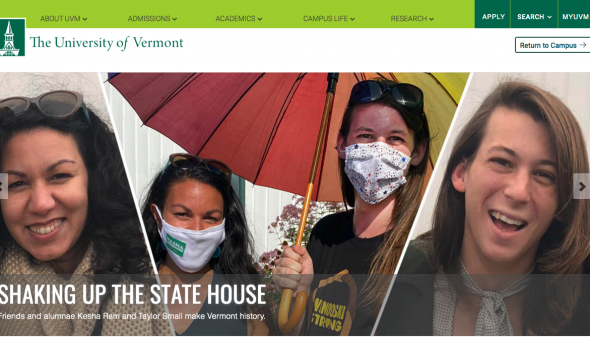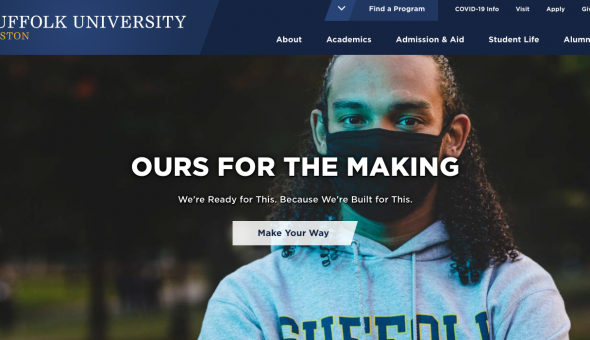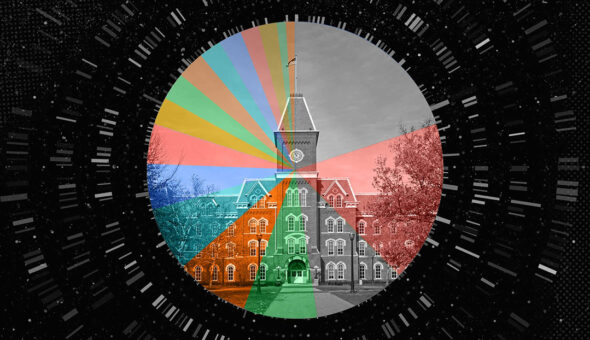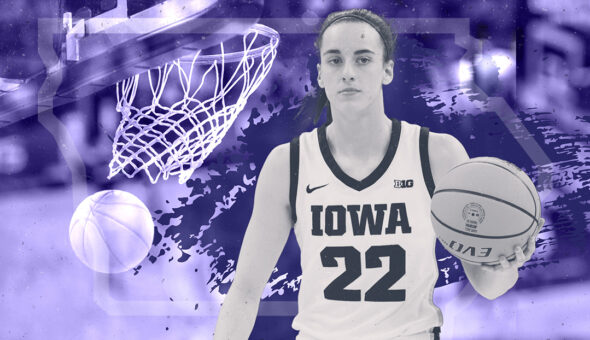On campuses across the country, mask wearing has become a requirement amid the unanticipated challenges of COVID-19. But college and university photo and video libraries were created before the pandemic, and the pandemic won’t last forever – which raises the question: How much mask wearing can and should we depict in our marketing and communications collateral?
Amid tightening marketing budgets, re-shooting all of that imagery for the web, print, social media, is neither feasible nor necessary – the pandemic will hopefully be brought to heel this year, after all. But as we attempt to portray current campus life (and virtual learning) in an authentic manner, how many of our old photos & videos should we redo and update? And is it different for each audience and medium? What should remain “evergreen” and what needs to be more timely to depict our current situation?
I propose a few suggestions to address these questions:
Find the Right Mix
Experts say our current mask-wearing and social-distancing practices could last until next winter, meaning higher ed marketing and communications professionals need to strike the right balance between showing masks and demonstrating safety with showing vibrant, engaging, and as-normal-as-possible activity on campus.
It’s possible to show you are being safe without having everyone in full masks all the time by using a mix of new photos with masks and older photos without. University of Vermont is a good example of a balance between mask-wearing photos and photos taken pre-pandemic. Penn State’s home page also does a good job of showing this through video.

Another option is to shy away from showing people at all by using beauty shots of campus that highlight landscapes and buildings without people being depicted like Temple University or to use your school mascot as the focus of photographs, like Daytona State College.
It’s also possible that mask wearing fits your school’s culture in a way that you want to embrace. Suffolk University, for example, has leaned heavily toward mask-wearing photos and graphic illustrations on their homepage.

This approach appears to play into the school’s scrappy ethos, illustrated by the tagline on the homepage ‘We’re ready for this. Because we’re built for this’ in which ‘this’ can refer to life in general, and/or to the current challenges being thrown at us which serve as just one example of universal readiness Suffolk students can expect to be prepared for. For schools with similar brand identities, then, going all-in on showing masks could be the right thing to do.
Depict Mask Compliance Creatively
It is clearly more challenging to show engaging expressions when we can’t see the whole face. I recommend making sure you can see the students’ eyes and that the eyes convey the expression. Some body movement or active poses can help to show enthusiasm and vibrancy – perhaps hands up or a playful jump or fun “thumbs up” pose as Massachusetts College of Liberal Arts uses on their homepage feature on Fighting Food Insecurity. Branded masks can also help tell an institution’s story amid a pandemic.
You can also show images of students in the process of taking off or putting on their masks, or with masks in their hands. In some cases, it may be appropriate to use photos of students without masks if they are alone or clearly social distancing.
For videos, you can have the subject start with the mask on, but then take it off to speak while shooting them in a location where they are alone or social distancing, or show a mix of mask on and no masks, as Syracuse did in this student story video:
Consider the Lifespan of the Communication
Ask yourself, how long will this be live and relevant? Is it evergreen content, or something more timely and short-lived? The intended use and timeframe can help you to determine how much mask wearing to show. Social media, for example, is very timely and can show more of the current mask-wearing practice. But print pieces may need to have a longer shelf life. So you may choose to not show mask wearing in those pieces or instead use images of campus or individual students not wearing masks – which is appropriate now (social distancing) as it would be at any time.
Websites can be both evergreen and timely depending on how often you update certain sections and content, and on many sites, the further you get from the homepage, the fewer masks you see. For schools with limited resources or that want to punt on mask wearing as a political hot potato, the above-mentioned use of evergreen campus beauty shots can be useful.
Gauge Your Audience
One of the first rules of marketing: Know your audience. It is also the case with whether or not to show masks. Some audiences are more concerned about COVID safety protocols than others – which is not to say that schools should cave to social or political pressures to downplay the severity of this pandemic by showing everyone living a mask-free life on campus. But prospective students may want to think about what their life on-campus would be in a best-case scenario for fall 2021, or two years from now, or when they cross that graduation stage.
The University of Notre Dame’s Admissions website, for instance, primarily shows photos of people without masks – perhaps catering to the prospective student audience who may prefer not to see masks (though they’ve been caught up in the politics of the pandemic, too).
Parents of prospective students may want to see images of mask-wearing students to feel better about sending their students to campus. Alums may want to see that their schools are keeping students safe, too. It’s important to gauge your audience and consider your brand to determine what fits best with your brand image, your specific student body, and your communications strategy.
Ultimately, a good mix of new photos with masks and older photos without masks is probably the most realistic and authentic approach. After all, we need to show we are keeping our campuses safe, but also that we possess a vibrant history that predates the pandemic, and a future that will outlast it.








